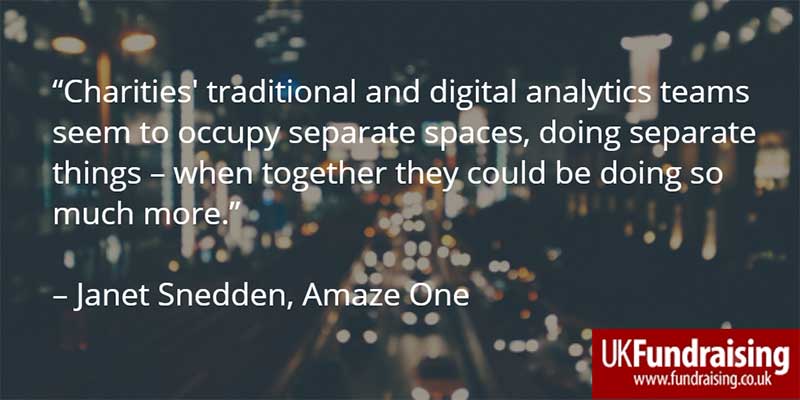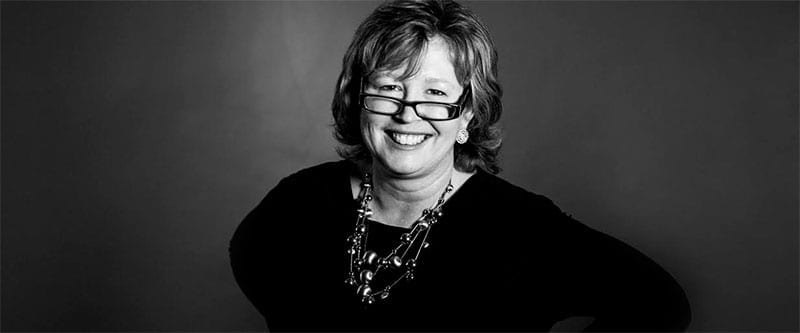Why charities need to merge digital and traditional insights for the good of the sector
I recently attended the 2015 Insight in Fundraising Awards and saw first-hand the great work charities are doing across the country. The event did, however, highlight a growing need for change in relation to digital analytics in the third sector.
In every awards category, as many as five shortlisted entries competed for the top spot. In the Digital Analysis category there were just two. The lack of finalists in the digital space was certainly a surprise, but it also highlighted a common problem facing lots of charities that are trying to unearth digital insights: their traditional and digital analytics teams seem to occupy separate spaces, doing separate things – when together they could be doing so much more.
Closing the loop
Why is this? Surely traditional and digital analytics perform the same function, albeit across different media channels? Third-sector infrastructure is clearly one cause. Some charities have little or no capability to connect disparate data sources, unlike the data-savvy and budget-rich commercial sector.
That doesn’t mean it’s impossible for charities to prosper, but they must be increasingly clever about how they operate. Unless charities truly understand the effect campaigns have on supporters – by knowing exactly which marketing activities drive particular actions and using that data to inform the next round of marketing – campaigns will continue to fall short of their potential. Closing the loop means smashing down the walls between digital and traditional teams.
Connecting the dots
There’s a compelling reason to bring these departments together in a common cause: gaining a better understanding of donors in order to improve the supporter experience. Digital and traditional techniques and measures may vary, yet both effectively operate in the same way with the mutual motivation of getting closer to donors. This convergence can help the third sector, and its effect on supporter behaviour can be dramatic.
Connecting the dots between traditional and digital analytics, and actioning this multi-channel intelligence, gives charities harmonised insights across channels. The consequence? Closer donor relationships underpinned by smarter supporter journeys.
Advertisement
Firing the fundraising of the future
There remains a balancing act between fundraising calls to action and a unique, personal and engaging supporter experience. This line must be walked carefully as you bring all the inferences you can muster into a single supporter profile, capable of delivering a rich supporter experience through targeted messaging.
Only by connecting all of your data can you start to build an engagement warehouse which responds and tailors messaging to exploit every point of contact with supporters. Ultimately, this joined-up approach can unlock powerful truths in the donor database and, critically, multiple actionable insights. The results can also deliver far greater proof of ROI.
Charities need to understand that insights derived from digital information are nothing but traditional techniques expressed in an online environment. The third sector has a collective duty to bring these two disciplines together. When it does, it will ignite the insights to fire the fundraising of the future.
Janet Snedden is Strategy Director, Amaze One – a St Ives Group collaboration. Throughout her career, she has been at the forefront of using data to engage customers and unlock new revenue streams. She did it as founder and CEO of MetaMetrics, one of the UK’s leading econometrics consultancies. And she did it with global marketing agencies including Wunderman and EHS Brann Discovery. Now she does it for Amaze One.
She was awarded Database Marketing’s Outstanding Contribution Award in 2014 for her personal contribution to driving data strategy, especially in the charity sector. She helps her clients win awards too.
Main image: data analytics by Hilch on Shutterstock.com





